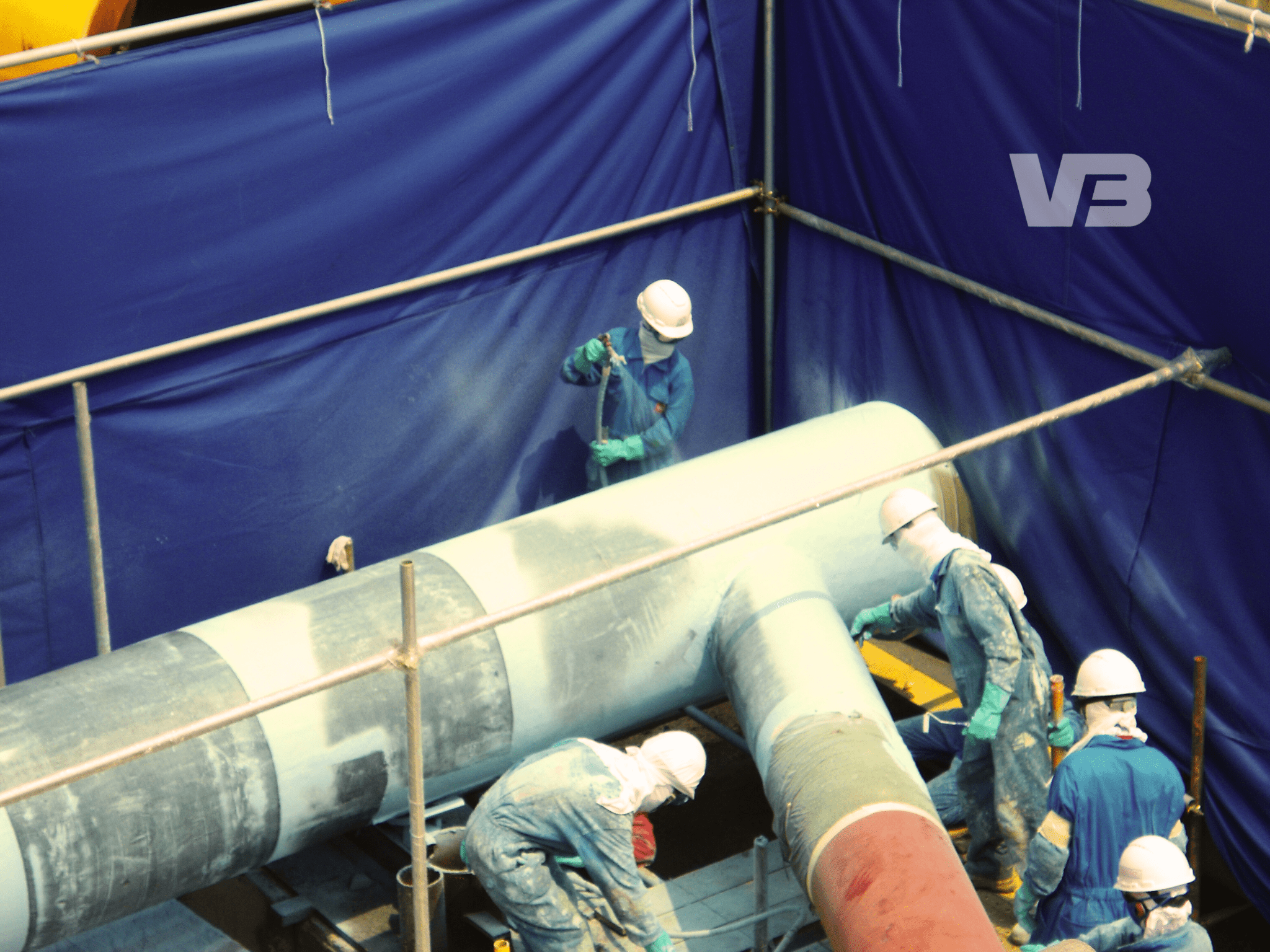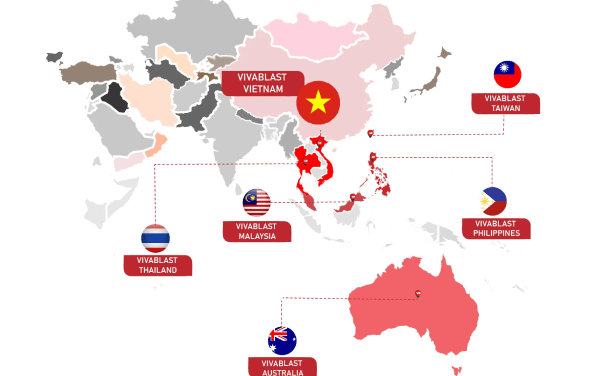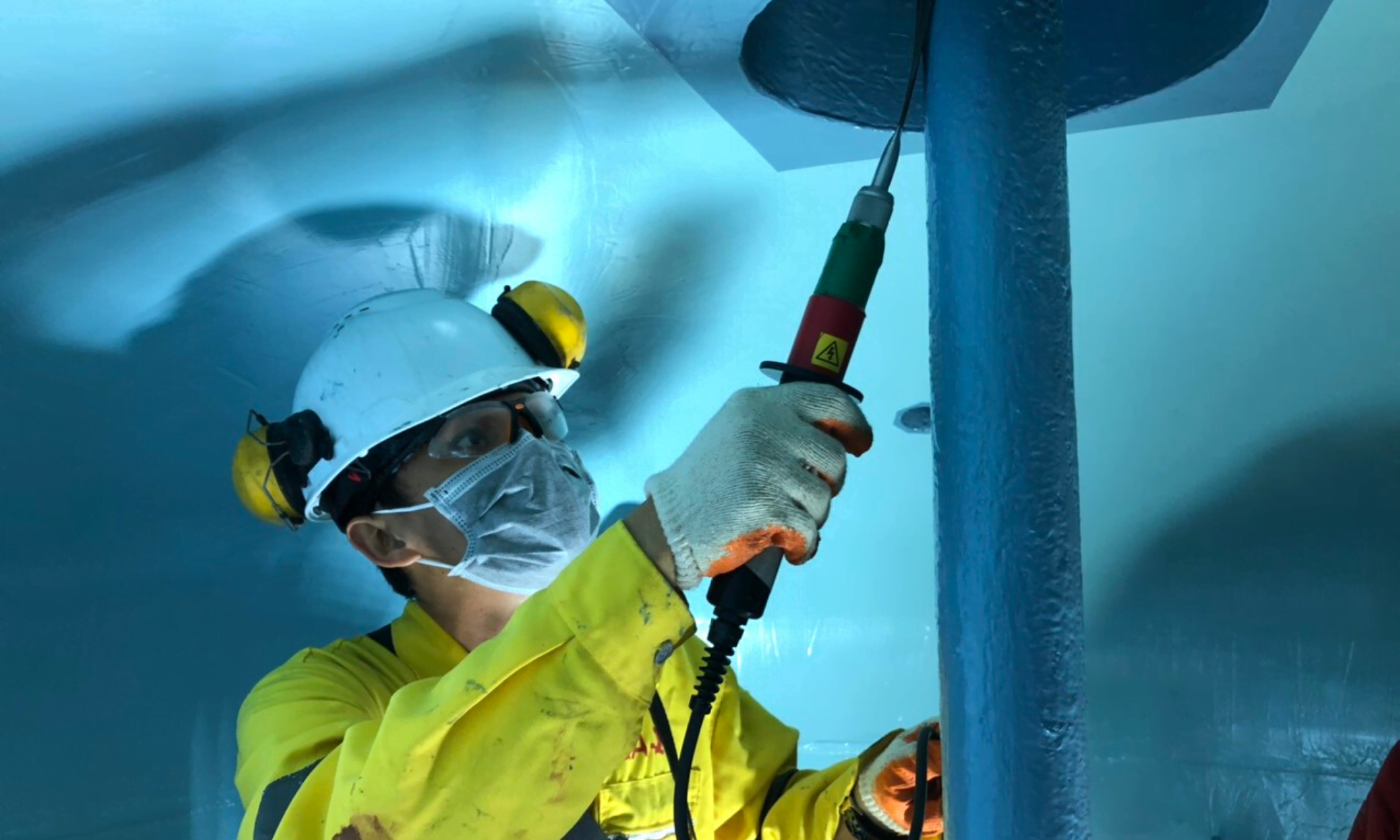Both fire retardant and fire resistant coatings play a vital role in fire safety and are necessary for factories and buildings. Understanding the difference between them allows you to make informed decisions regarding the appropriate level of protection for your specific needs. VIVABLAST leverages the expertise in applying both types of coatings to ensure the highest level of fire safety for your project, from structural steel beams to electrical cables.
Fire Retardant Coating
Fire retardant coating is a non-combustible chemical applied to various surfaces in residential, commercial, and industrial buildings. These coatings serve several purposes in fire safety:
- Stops the spread of fire: Fire retardant coatings can delay the spread of flames by creating a barrier between the material and the fire.
- Slows the spread of fire: Even if the fire does eventually break through the coating, it will slow the spread of flames.
- Reduces fire intensity: Fire retardant coatings can help to reduce the heat generated by a fire, making it easier for firefighters to control the blaze.
- Reduces smoke production: Some fire retardant coatings can also help to reduce the amount of smoke produced by a fire.
Benefits
- Improved fire safety: Fire retardant coatings can significantly improve the fire safety of a building by delaying the spread of fire, reducing fire intensity, and reducing smoke production.
- Protects lives and property: By improving fire safety, fire retardant coatings can help to protect lives and property in the event of a fire.
- Meets building codes: In many jurisdictions, fire retardant coatings are required by building codes for certain types of construction.
- Wide range of applications: Fire retardant coatings can be applied to a wide range of materials, including wood, steel, concrete, and fabric.
Industries Empowered by Fire Retardant Coatings
- Construction: Fire retardant coatings are often used on structural elements in buildings, such as beams, columns, and trusses. They can also be used on walls, ceilings, and floors.
- Manufacturing: Fire retardant coatings can be used on a variety of manufactured products, such as furniture, appliances, and electronics.
- Transportation: Fire retardant coatings are used on airplanes, ships, and trains to help prevent fires from spreading.
- Oil and Gas Industry: Fire retardant coatings are used on pipelines, storage tanks, and other equipment in the oil and gas industry to help prevent fires from starting and spreading.
Fire Resistant Coating
While fire retardant coatings delay ignition and slow fire spread, fire resistant coatings take it a step further. They act as a barrier, creating a protective char layer that insulates the underlying material from flames and intense heat. This char layer significantly extends the time it takes for the material to ignite or collapse. There are two main types of fire resistant coatings:
- Intumescent Coatings: These water-based coatings expand significantly when exposed to high heat, forming a thick, insulating char.
- Cementitious Coatings: These coatings are made from cement and other inorganic materials, providing a strong, fire-resistant barrier.
Benefits
- Superior Fire Protection: Fire resistant coatings offer the highest level of protection among fire retardant coatings, significantly delaying the collapse or failure of structural elements in a fire.
- Increased Life Safety: By extending the time it takes for a fire to spread, fire resistant coatings provide more time for safe evacuation and for firefighters to respond.
- Protected Property: Fire resistant coatings can help minimize property damage by preventing flames from reaching and damaging underlying materials.
- Compliance with Building Codes: In many areas, fire resistant coatings are mandatory for specific building types and applications to meet fire safety regulations.
Protecting a Range of Industries
- Structural Steel: Protecting steel beams and columns in buildings, which are susceptible to losing strength at high temperatures.
- Wood Construction: Fire resistant coatings can be used on wood framing, beams, and other structural elements to improve fire resistance in wood-framed buildings.
- Tunnels and Bridges: Fire resistant coatings can be applied to critical infrastructure elements like tunnels and bridges to enhance fire safety.
- Offshore Platforms: They play a vital role in fire protection on oil rigs and other offshore platforms.
- Industrial Facilities: Fire resistant coatings are essential in factories, warehouses, and other industrial settings to safeguard equipment and structures.
Choosing the Right Coating
Coatings play a crucial role in various industries, ranging from safeguarding surfaces from harmful elements to enhancing the aesthetic appeal of structures. However, with the vast array of types, features, and applications available, selecting the appropriate coating for a project can be a daunting task. To begin, two critical factors must be considered

Fire Rating Requirements:
- Understanding Fire Ratings: Different building materials have fire resistance ratings, indicating how long they can withstand a fire. Coatings can improve a material’s fire rating, adding valuable time for evacuation and firefighting.
- Specify the Required Rating: Building codes dictate the minimum fire rating required for various building components. Identify the relevant code and the fire rating your project demands.
- Coating Selection for Fire Safety: Different coatings offer varying degrees of fire resistance. Research fire-resistant coatings, such as intumescent paints, which expand when exposed to heat, creating an insulating layer.
Cost-Effectiveness
- Initial vs Long-Term Costs: Consider not just the upfront cost of the coating, but also its expected lifespan and maintenance requirements. A more expensive coating with superior durability might be more cost-effective in the long run.
- Application Costs: Factor in the labor and equipment needed to apply the coating. Some coatings require specialized application techniques, impacting the overall cost.
- Finding the Right Balance: Strike a balance between affordability and performance.
At Vivablast, for example, we utilize four main types of passive fire protection systems: fireproof sheets, ablative spray, flame-retardant paint, and puff coating. To learn more about our comprehensive passive fire protection solutions, please visit our dedicated page.




